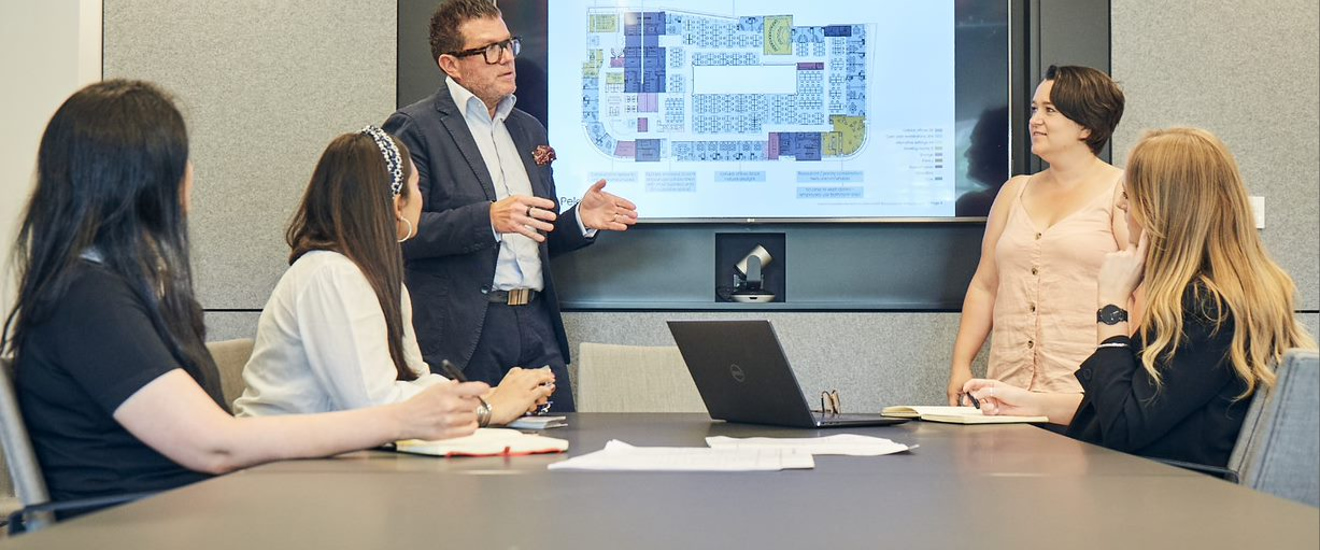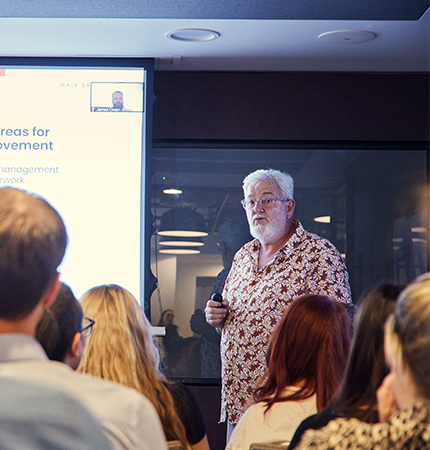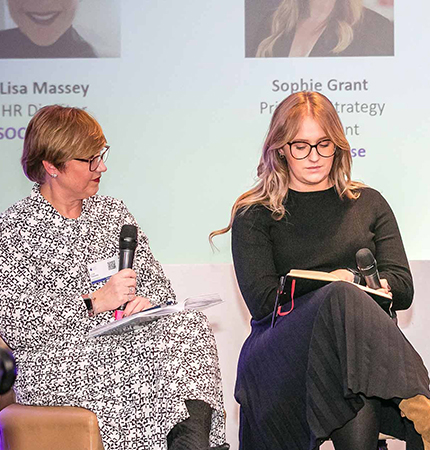
Sign up to our newsletter.
Stay up to date on the latest in workplace design & build. Sign up to our newsletter for useful advice, information and inspiration from the world of workplace.

In this article, we’ll take a look at what change management means, why it’s important and how to effectively navigate change within the workplace.
Change management is an enabling framework for managing the people side of change. It is aimed at bringing about organisational change, transforming businesses and their teams from their current state to a desired future state efficiently and effectively. It involves identifying the need for change, logistically planning its execution, and equipping people with the right skills and tools to sustain change long after its implementation. Change management also considers how people and processes will be affected by change and what steps need to be taken in order to adapt them. Ultimately, successful change management involves embedding change into the fabric company culture to ensure sustainable growth in the long term.
Effective change management helps to deliver positive reactions to change. As humans, change isn’t easy for us. It can often trigger behaviours and reactions linked to feelings of surprise, lack of control and uncertainty. We interpret this ‘social pain’ in our brains in the same way we interpret physical pain. Change management provides people with the right information and tools to tackle change, turning resistance into understanding and acceptance, all whilst successfully delivering expected results and outcomes as well as some unexpected benefits.
Implementing a new workplace strategy and design is one of the most visible expressions of change an organisation can make. Whilst a new work environment can be a driver for increased collaboration or productivity, realising the full benefits will require your people’s attitudes to shift and their behaviours to change. That's where change management comes in.
The aim of change management within workplace transformation is to shape people’s expectations to match their new environment before they experience it. Whilst an office relocation or redesign can be perceived as a ‘step change’ (described as a significant change that allows positive transformation or growth to take place), people adapt their attitudes and behaviours slowly and incrementally over time. You can think about change management a bit like an iceberg. It tackles the stuff below the waterline, the deep-rooted values, beliefs, and assumptions. It tackles perceptions you can't see, which many organisations find difficult to address.
By having a change management process in place, steps can be taken to motivate, educate and prepare people for change. It’s easy to assume that individuals will automatically adapt to their new workplace. However, many will resist change, and those that do adapt to the change, may not change in the way that you'd hope. In essence, change management is your ultimate risk mitigation tool.
The difference between change management and project management is in how each are managed. Project management is all about technical changes and focuses on achieving specific objectives within a defined programme and budget. It has well documented guidelines, follows a linear timeline and manages the activities of a project to meet specific goals and requirements. Change management, on the other hand, is all about the hearts and minds and aims to support individuals in transitioning from a current state to a desired future state. It has no specific guidelines, follows a much less structured timeline, and manages the impact of change resulting from organisational or project developments.
Change is a transition and, contrary to popular belief, it starts with an ending. It requires saying goodbye to something we know before something new can begin. We typically use the Change Curve (Kübler-Ross, 1969) to help describe this experience of transition.
.jpg)
Change management is often thought of as a final implementation step to get to the finish line. However, change management should be proactive: a plan for the plan. It should be implemented and integrated from day one as soon as a direction or future vision for the workplace has been decided. By engaging stakeholders upfront, valuable feedback can be implemented throughout the creation of a new workplace strategy and design.
We first need to determine the level of change effort required for each client. The extent of change needed varies from organisation to organisation depending on several variables. We look at current conditions, needs, resources and attitudes of the organisation. Once we have a clear understanding, we like to think about change management as a three-part, project integrated process. All three are crucial to success, otherwise you run the risk of disengagement and frustration.
This part is all about demonstrating why and what is changing. If the why message isn’t clear, you’ll struggle to get people onboard.
This part is all about helping people understand how to change. Equipping them with the right tools to prepare.
This part is all about living the longevity of change. You can find out more about the three-part, project integrated change management process in our guide on how change management can help overcome business challenges.
Headed by Leeson Medhurst, Peldon Rose’s Workplace Strategy team works with clients to create a complete, accurate and insight-based picture of what your workplace could and should achieve. Then, we help show you what the space could look like, how it could evolve, while ensuring we take your team along the whole process with us.





Your workplace holds enormous potential to improve your business performance. Get in touch today, and we will unlock that potential together.